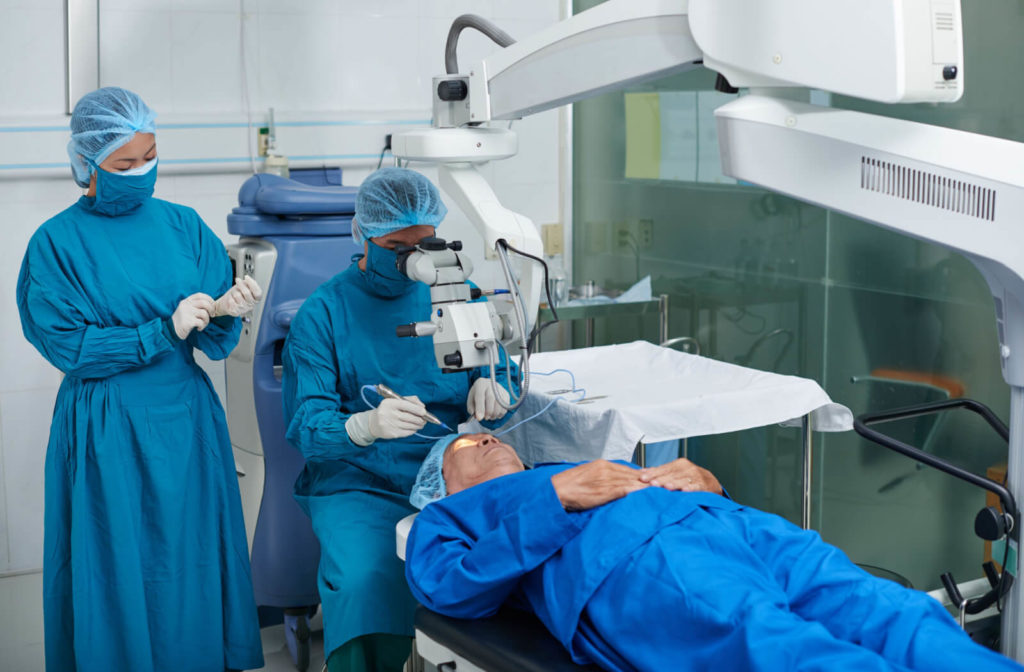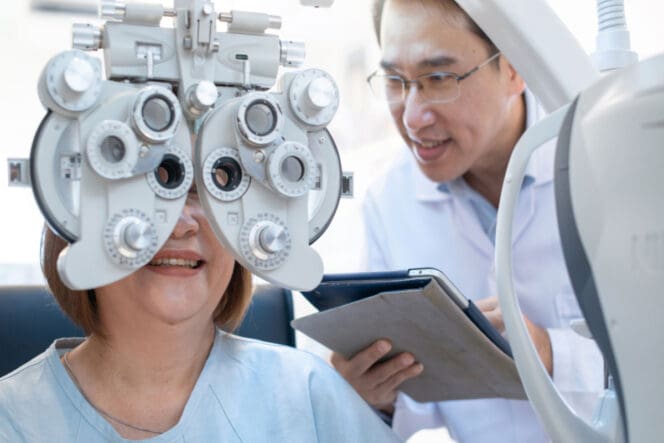Checking Out the Most Recent Technological Improvements in Optometry and What They Mean for Optometrists
In the ever-evolving area of optometry, current technological innovations are reshaping just how practitioners come close to eye treatment. From the accuracy of Optical Comprehensibility Tomography to the nuanced understandings used by AI-driven diagnostic devices, these developments are establishing new standards in patient evaluation and therapy. Teleoptometry is positioned to redefine accessibility, making certain that expertise goes beyond geographical limitations. As these improvements permeate the method, optometrists are confronted with the challenge of accepting these tools to enhance individual results. The concern stays: just how will these technical changes redefine the duties and obligations within the occupation?
Advancements in Diagnostic Devices
Progressing the field of optometry, developments in diagnostic tools have actually changed the method eye treatment specialists analyze and identify visual disabilities and ocular problems. The past decade has observed significant technical improvements, allowing more detailed and accurate examinations.
Another key innovation is the intro of innovative corneal topography systems, which map the surface curvature of the cornea with precision. These devices are specifically valuable for fitting call lenses and diagnosing corneal problems. Moreover, electronic retinal imaging has changed standard ophthalmoscopy, providing in-depth, breathtaking views of the retina that facilitate detailed visual evaluations.
The growth of wavefront aberrometry has actually additionally been critical, enabling the analysis of refractive mistakes with unequaled accuracy (Opticore Optometry). This modern technology aids in customizing restorative lenses and enhancing medical end results for refractive surgeries. Collectively, these diagnostic developments empower eye doctors to provide remarkable person treatment, making sure very early intervention and tailored therapy approaches, inevitably boosting aesthetic wellness end results
AI in Patient Management
Structure on the structure of innovative diagnostic tools, the incorporation of synthetic intelligence (AI) in person management represents a transformative jump for optometry. AI systems are progressively used to enhance efficiency, precision, and customization in person treatment. By examining substantial quantities of information, AI can recognize patterns and forecast possible eye conditions, allowing eye doctors to tailor treatments much more successfully. This ability is vital in managing chronic eye diseases such as glaucoma and diabetic retinopathy, where very early detection and continuous surveillance are crucial.
Moreover, AI-driven systems help with structured client communications and administrative processes. Automated organizing, virtual examinations, and personalized follow-up strategies not just boost client complete satisfaction however additionally optimize time administration for practitioners. These systems can triage patients based upon the urgency of their conditions, making sure that those in important requirement get punctual attention.
In addition, AI enhances decision-making by giving eye doctors with evidence-based referrals and treatment paths. By incorporating information from electronic health and wellness documents, AI devices offer insights that educate scientific decisions, lowering the danger of mistakes and boosting client results. As AI proceeds to develop, its function in client administration will likely broaden, reshaping the landscape of optometric care.
Developments in Retinal Imaging
In the world of optometry, retinal imaging has seen remarkable technological developments that are enhancing analysis capabilities and patient treatment. Advancements such as Optical Coherence Tomography (OCT) and fundus digital photography have reinvented how optometrists analyze the retina and imagine.
Enhanced imaging techniques like OCT angiography are more refining analysis precision. Opticore Optometry. Such advancements assist in the recognition of minute retinal modifications that can signify condition progression.
Additionally, advancements in fabricated knowledge are increasing retinal imaging by allowing computerized evaluation of big datasets. These systems aid eye doctors in recognizing patterns a sign of pathology, therefore enhancing diagnostic accuracy and efficiency. Collectively, these advancements are changing retinal imaging right into a cornerstone of contemporary eye care, enhancing results and broadening healing opportunities.
Teleoptometry's Expanding Role
Teleoptometry is increasingly becoming a vital part of eye treatment, driven by innovations in digital communication and diagnostic devices. This is especially beneficial in underserved and rural locations where access to specialized eye care is often minimal.
The integration of man-made intelligence (AI) more improves teleoptometry, enabling the analysis of aesthetic information and assisting in the detection of eye problems such as glaucoma and diabetic person retinopathy. AI-powered formulas can quickly translate complex imaging data, providing eye doctors with valuable insights that strengthen medical decision-making.
In addition, teleoptometry sustains continuity of treatment through seamless integration with digital wellness records (EHRs), permitting optometrists to preserve comprehensive patient backgrounds. When seeking advice from with various professionals., this ensures that patients receive regular and individualized treatment even.
Regardless of these advantages, obstacles stay, including guaranteeing information safety and security and taking care of individual expectations. Teleoptometry represents a considerable stride in this link the direction of more accessible, efficient, and patient-centered eye care. As technology evolves, its role is positioned to increase better.

Future Patterns in Eye Treatment
A myriad of innovative trends is set to improve the future of eye care, driven by technical developments and the progressing needs of patients. One substantial trend is the assimilation of synthetic knowledge (AI) in diagnostics, which guarantees to improve the precision and performance of eye exams. AI algorithms can examine huge amounts of information from retinal photos, possibly detecting problems like diabetic person retinopathy and glaucoma earlier than standard methods.
Additionally, individualized medicine is acquiring grip in optometry, with hereditary screening educating customized treatment plans. This strategy intends to enhance patient outcomes by customizing treatments to specific genetic accounts. Wearable modern technology, such as smart get in touch with lenses, is likewise imminent, providing real-time surveillance of intraocular pressure or glucose degrees, hence giving constant understandings right into systemic and ocular wellness.
The fostering of increased reality (AR) and virtual reality (VIRTUAL REALITY) in training and person education and learning is an additional emerging trend. These innovations offer immersive experiences that can enhance understanding and abilities both for clients and eye doctors. As these fads advance, eye doctors must remain abreast of technical improvements to supply cutting-edge treatment, guaranteeing improved client end results and fulfillment in the vibrant landscape of eye care.
Conclusion

Jointly, these analysis developments equip optometrists to supply remarkable patient treatment, guaranteeing early treatment and customized treatment methods, inevitably enhancing visual health outcomes.

As these innovations continue to develop, eye doctors must adapt and include them into method, ultimately i thought about this enhancing workflow effectiveness and boosting the requirement of eye care supplied to patients.